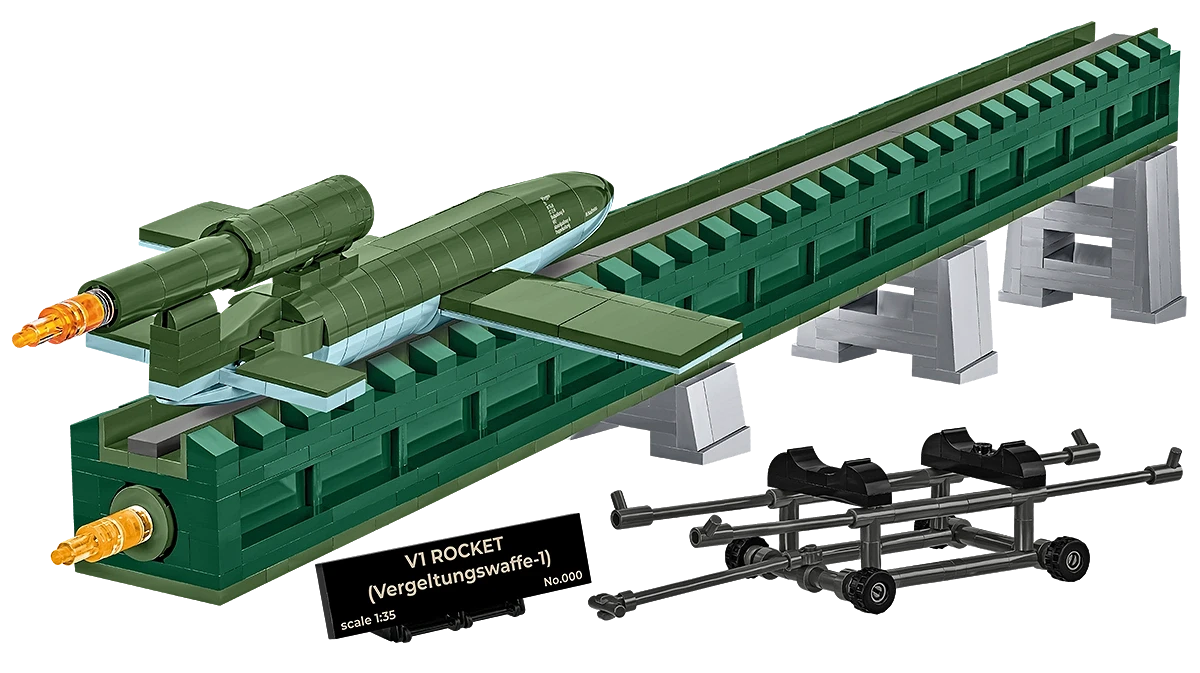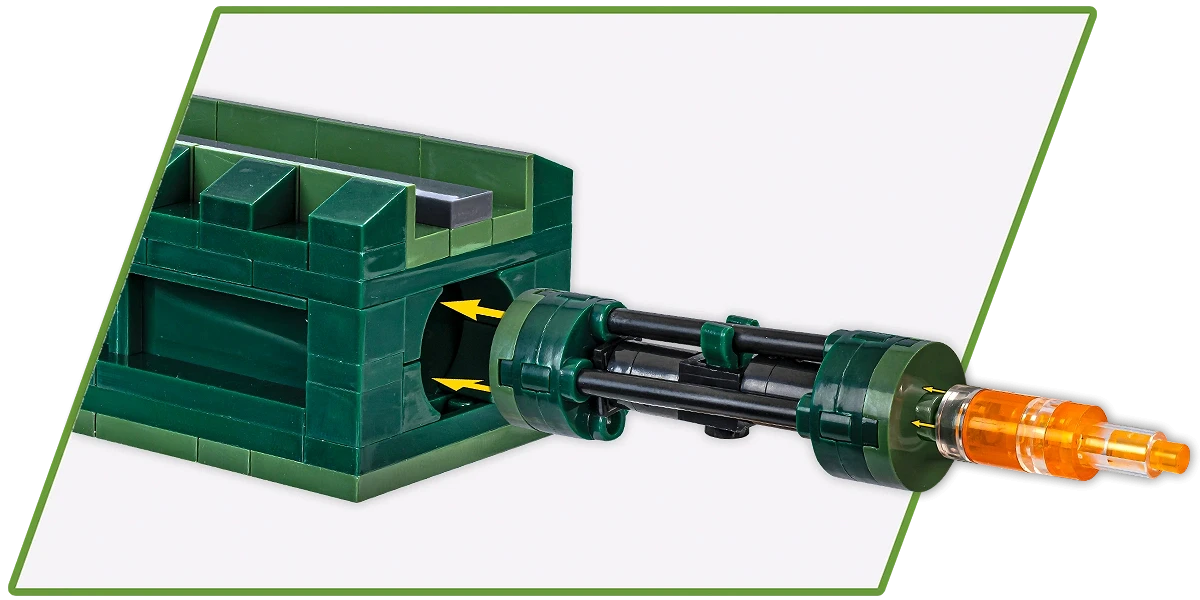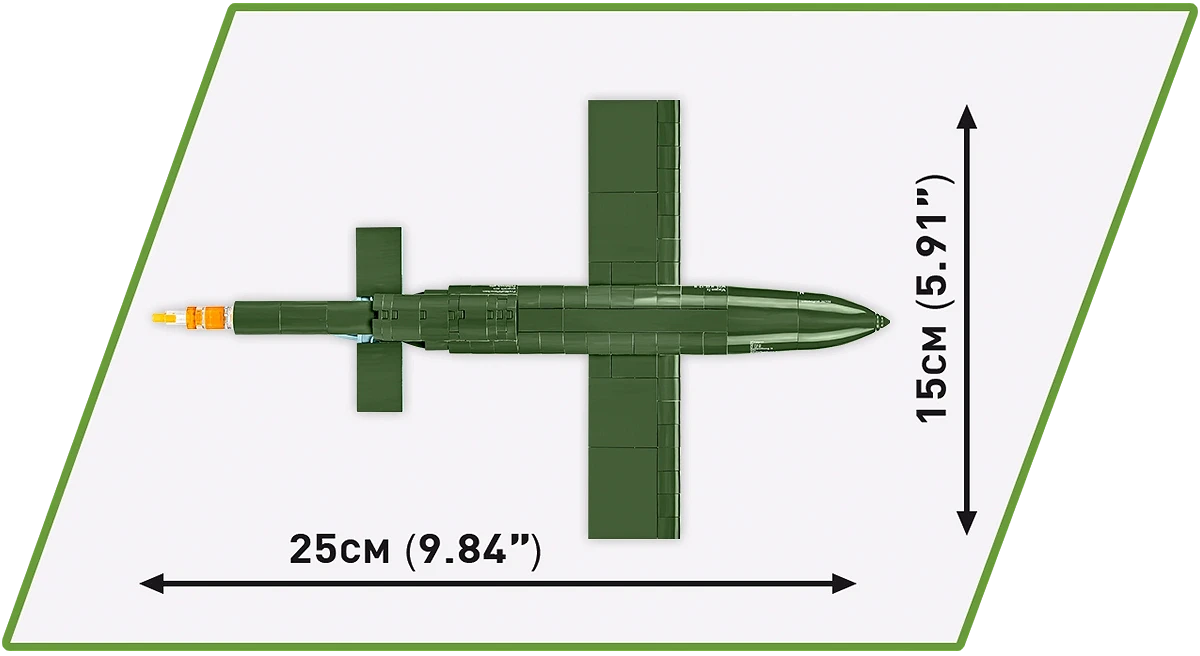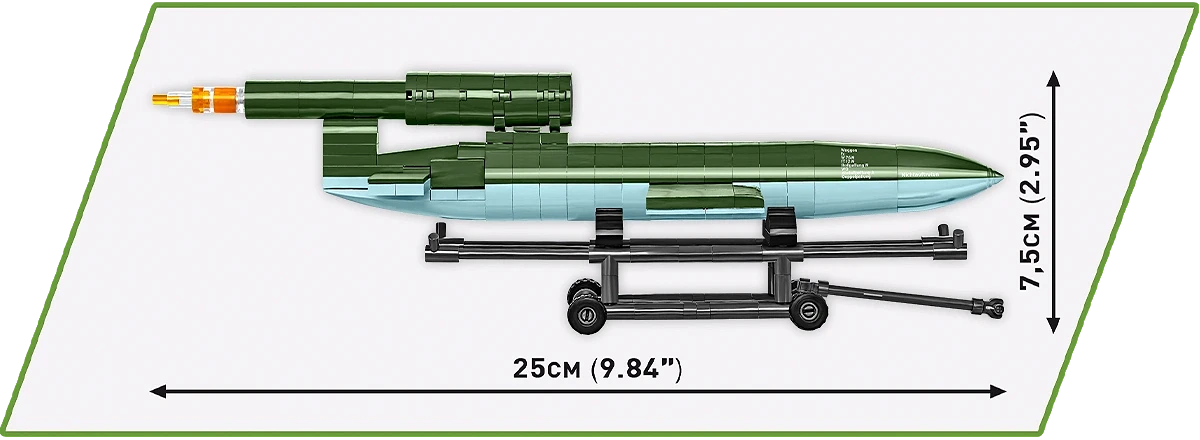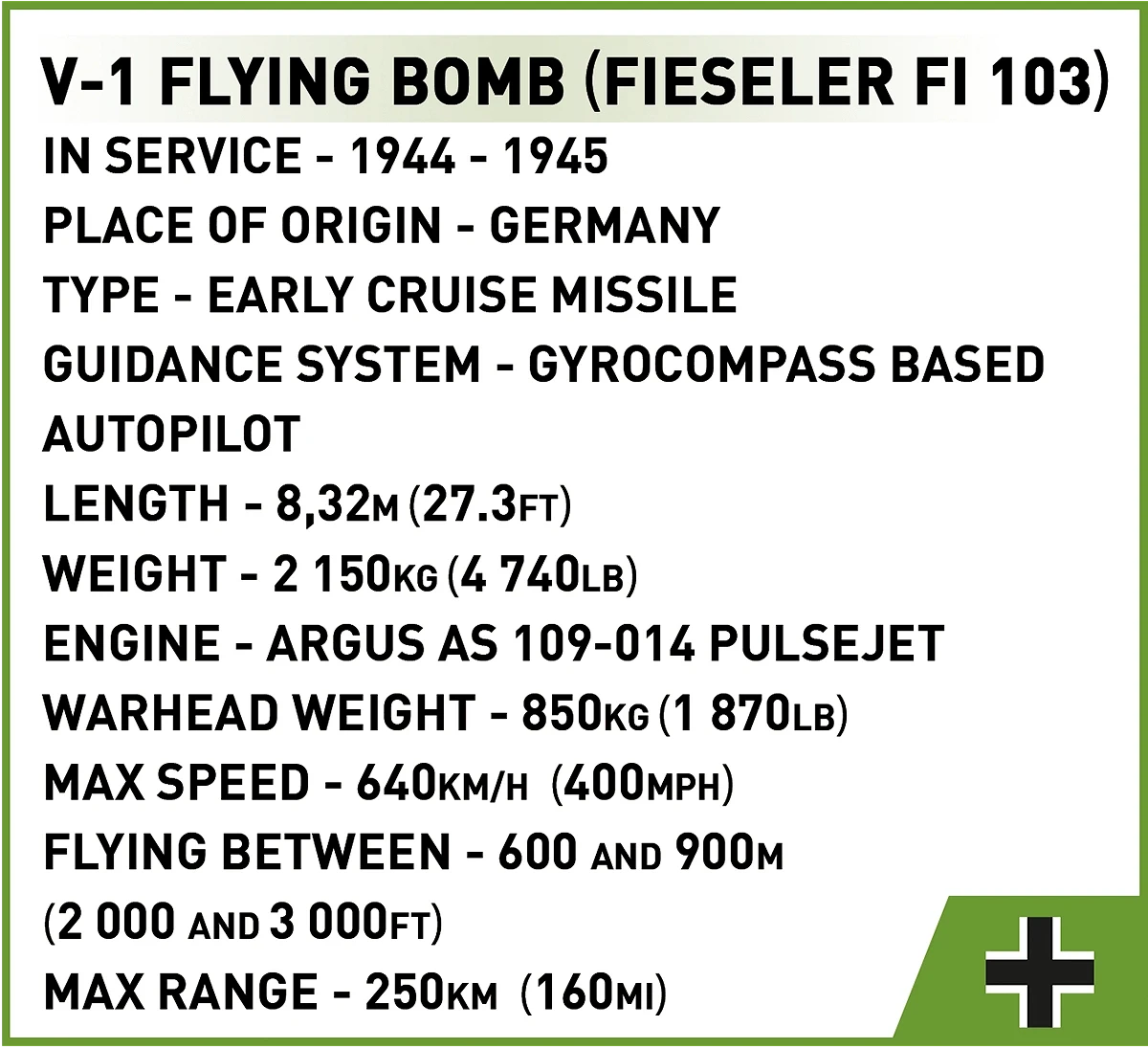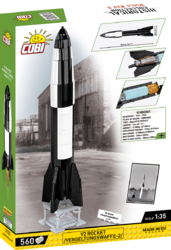A model kit of the German retaliatory weapon known as the V-1, including a launch pad and a transport cart. The assembled missile is equipped with a model of a pulsating engine with whipping flames. The package includes a figure of a high-ranking Luftwaffe officer, an assistant officer from the auxiliary military service, a mechanic and a figure of a German soldier with guard duty equipment. The limited edition kit also includes a certificate with a unique serial number confirming the originality of the product.
Show more
0 %
(0 Ranking)
| List Number: | COBI-3134 |
| EAN: | 5902251031343 |
| Warranty: | 24 months |
| Manufacturer: | COBI |
| Price excluding VAT: | 1 155,87 Kč |
Description
Parametres
Files and Links
Discussion
Reviews
! Pre-orders will be shipped starting April 28, 2025 !

Did you know: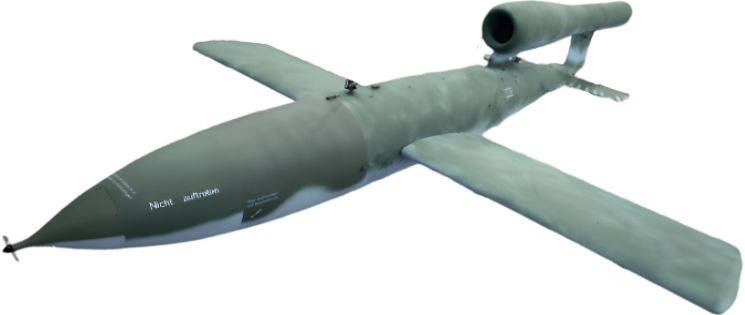
- The German V-1 vengeance weapon was designed by Fieseler engineer Robert Lusser in 1942.
- The flying bomb with a flat trajectory was a testament to the high level of German engineering and surpassed everything the wartime industry had previously offered.
- The first missile was launched from a pneumatic catapult on October 28, 1942, as an unpowered test prototype.
- Germany began serial production in March 1944, initially in the secret Peenemünde facility. Production was later expanded to several underground factories in occupied Europe, where many concentration camp prisoners and forced laborers worked under inhumane conditions.
- The largest assembly plant was the Volkswagen factory in Fellersleben.
- The first warhead-equipped missile (820 kg) was fired at London in June 1944.
- By the end of World War II, over 20,000 V-1 missiles had been launched. Of these, 10,000 targeted London. Only about 2,500 missiles actually hit the target. The rest malfunctioned mid-flight, were destroyed, or missed the target.
- Despite the unreliability of the pulsejet engine and navigation system, the number of missiles that hit London was terrifying. On some days, more than 100 missiles were launched.
- The missile was guided by a front-mounted propeller that measured the flight distance. Upon reaching the preset value, it cut off the fuel supply and deployed spoilers. The V-1 lost speed and crashed after reaching stall speed.
- Navigation was handled by a gyroscope powered by compressed air. Before launch, operators set the gyrocompass and balanced the wings. For balancing, propaganda magazines like Signal were stuffed into the missile's cavities.
- The flying missile was hard to intercept with anti-aircraft fire, and the only other defense was to shoot it down mid-flight using high-speed fighters like the P-51 Mustang—always an extremely dangerous maneuver.
- Only later did British anti-aircraft defense develop a technique with a 74% success rate for shooting them down.
- Allied air forces heavily bombed factories and launch sites in an effort to halt or at least reduce the number of attacks.
- The last V-1 was launched on March 29, 1945.
- The production cost of a single unit was 5,090 Reichsmarks, which translates to approximately CZK 520,000 in today’s money.
Technical specifications of the V-2: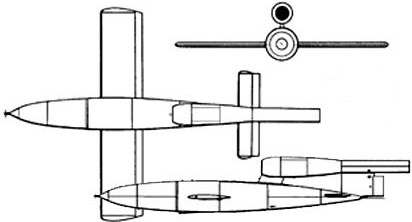
- Dimensions: wingspan 5.37 m, length 7.9 m, height 1.42 m
- Missile body diameter: 1.42 m
- Weight: 2150 kg
- Warhead: Amatol-39, weight 820–850 kg
- Propulsion: pulsejet engine, 50 cycles/second, Argus AS 109-014
- Maximum speed: 640 km/h
- Range: 250 km
- Ballistic altitude: 600–900 m
- Fuel capacity: 500 liters of gasoline
From the memories of American pilot Richard “Dick” Turner:
“I spotted a missile below me and started diving toward it. But it was out of range. I tried to catch it, but that damn thing was too fast. I chased it for about ten minutes, climbing and diving to build up speed, sending long bursts from my machine gun after it. One of my bullets must have hit it by chance, because yellow flames burst from the missile and it started losing speed. Moments later, it fell into a field and exploded.”
Assembly Instructions
| Version (series) | 09/2024 |
|---|---|
| Scale | 1 : 35 |
| Recommended age | 10+ |
| Number of figurines | 4 pcs |
| Dimensions after assembly | 58,5 x 15 x 15 cm |
| Number of pieces | 745 pcs |
| Contains luminous blocks | No |
| Material | Plastic |
| Collection | World War II Limited Edition |
| Compatible with other brand of kits | Yes |
Discussion is empty.
There is no review for product yet












